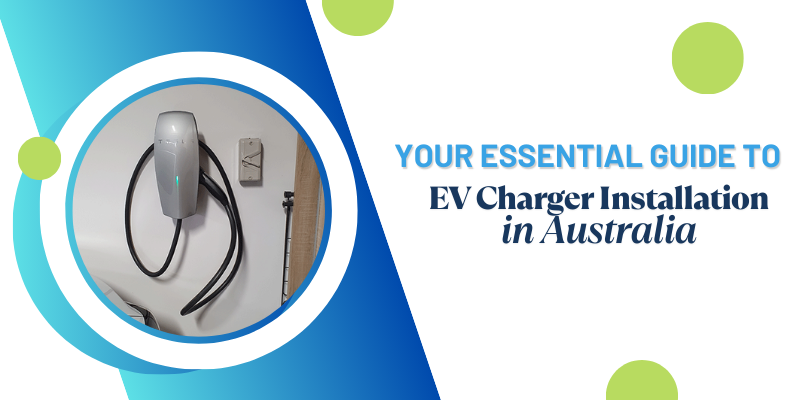Switching to an electric vehicle brings clear advantages, from cutting running costs to reducing emissions. A key step is arranging professional EV charger installation at your home or commercial site. This guide to EV installation explains the three primary charging levels (Level 1, Level 2, and DC fast chargers) and offers practical advice on ensuring a safe and reliable Tesla charger installation or general car charger installation with a qualified professional. You’ll also find tips on choosing the right location, securing permits, and working with an accredited Level 2 electrician in Sydney.
1. Level 1 Charging: Simple and Affordable
Level 1 charging uses a standard 240-volt household socket and delivers around 2–3 kilowatts of power, adding roughly 10–15 kilometres of range per hour. It involves minimal additional wiring, making it the most budget-friendly option.
What to expect:
- Your electrician will verify that the existing outlet can handle the continuous load and may install a dedicated circuit.
- Perfect for low-mileage drivers, homes without spare electrical capacity, and those on tight budgets.
- Keep charging cords tidy and off walkways to prevent trips and wire damage.
2. Level 2 Charging: Speed and Convenience at Home
Level 2 chargers connect to a dedicated 32 amp (or higher) circuit, supplying 7–11 kilowatts of power. They restore 40–70 kilometres of range per hour, making them ideal for overnight charging. A skilled Level 2 electrician will install the circuit, mount the unit, and ensure compliance with Australian wiring rules.
Why Level 2 makes sense:
- Quick enough for daily commuters to recharge between journeys.
- Programmable schedules allow the use of off-peak electricity tariffs.
- Permanent installations can add value to your property.
Finding the right professional:
Look for an electrician with a current contractor licence, EV-specific training, and public liability insurance. An accredited Level 2 electrician in Sydney understands local grid protocols and can guide you on upgrades like power poles or single-phase to three-phase upgrades if your property requires it.
3. Level 3 DC Fast Charging: Rapid Power for Public and Commercial Sites
DC fast chargers bypass the onboard converter, turning AC into DC within the unit. Outputs range from 25 kW up to 350 kW, delivering 150–400 kilometres of range in just 20–30 minutes.
Key considerations:
- Power upgrades with three-phase connections are essential.
- Civil works like concrete pads and cable trenches are often required.
- Many are managed by specialist operators who handle maintenance and billing.
For businesses, the higher installation costs often pay off by attracting EV drivers, extending visitor stays, and increasing customer loyalty.
4. Permits, Approvals, and Safety Checks
Before installation begins, permits and distributor approvals are mandatory. Your electrician will:
- Submit an electrical work request for new service or capacity upgrades.
- Secure building permits for external charger mounts.
- Conduct safety checks to meet Australian Standard AS/NZS 3000.
This ensures your EV charger installation is legal, safe, and warranty-protected.
5. Government Incentives and Rebates
Across Australia, incentives are available to reduce installation costs. You may qualify for:
- Rebates or interest-free loans for home chargers.
- Grants for businesses installing public chargers.
- Discounts for joining demand-management programs.
Check your local authority’s website for the latest eligibility details.
6. Maintaining Your EV Charger
Routine care keeps your charger reliable:
- Inspect cables and connectors every three months.
- Clear dust or debris from vents.
- Use the manufacturer’s app to keep firmware updated.
- Book an annual inspection with your electrician.
Early checks save you from costly downtime.
7. Choosing Charger Location and Brand
When planning installation, consider:
- Proximity to your switchboard to reduce cable length.
- Clear, safe access for plugging in.
- Height and angle for easy use.
If you own a Tesla, choosing an authorised Tesla installation guarantees seamless compatibility and warranty protection. Other brands also offer universal chargers that support multiple EV models and integrate with home energy systems.
8. Future-Proofing Your EV Charger Installation
As charging technology advances, prepare your property for upgrades:
- Install circuits with 40 amps or higher.
- Use conduit for easier future cabling.
- Consider solar or home battery integration to reduce costs.
Planning ahead today keeps your home ready for tomorrow’s charging needs.
Making the Move to Electric Driving
Arranging a professional EV charger installation is a straightforward step towards cleaner driving. Whether it’s a Level 1 socket, a fast Level 2 home unit, or a commercial DC fast charger, working with a qualified electrician ensures safety, compliance, and long-term value.
For expert help, contact IZCO Electrical, a trusted Level 2 electrician in Sydney, specialising in residential and commercial EV charger installations.




